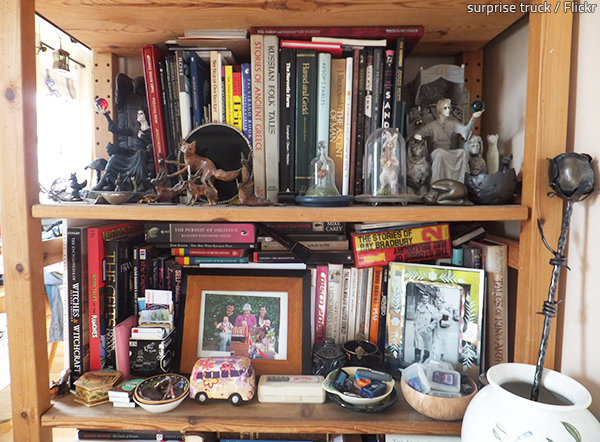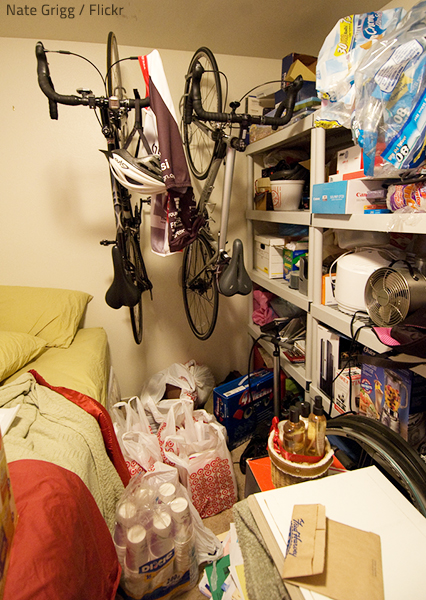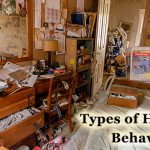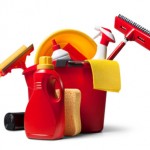
The possession of material goods has been seen as a sign of prosperity and high social status for many centuries and in many cultures. Even though religions all around the world have always denounced the accumulation of material objects and advocated for modesty in housing, clothing, and food, only recently has the concept of minimalism and simplicity begun to gain popularity and appreciation. And while some people have gladly embraced it and pared down their belongings to the absolute minimum, there are those who feel quite reluctant to part with any of the numerous items they have accumulated over the years.
So, does that make them hoarders? Most people have odds and ends all over the place and knick-knacks gathering dust in nooks and crannies. Most people have some clutter in their homes – books, souvenirs, gifts, decorative items, keepsakes, hobby materials, old toys, old clothes, all kinds of collections and memorabilia, etc. Most people, however, are able to keep their clutter under control. A little mess does not make one a hoarder. A compulsive desire to accumulate more and more items and an inability to let go of anything, on the other hand, does.
There’s a subtle, yet significant difference between clutter and hoarding. Here is how to distinguish the thin line between the two.
What Is Clutter?
Clutter refers to large amounts of objects that are lying around in a disorderly state. The items are not necessarily unneeded or worthless – some of them may have great practical, monetary, or sentimental value, while others may be completely useless and meaningless. Either way, the accumulated clutter makes a place look unpleasant, untidy, and chaotic.
Most households experience varying stages of clutter – from stacks of old magazines and newspapers through shelves piled with decorations to small mounds of dirty laundry and dusty boxes. The items may have accumulated for different reasons:
- The owner may have an emotional attachment to certain objects (jewelry, antiques, vinyl records, sports memorabilia, kids’ toys) and want to hold onto them, even though they take too much space and may never be used again;
- The owner may have a strong interest in something and collect all kinds of items related to it – books, tools, gaming equipment, sports equipment, craft supplies, cooking gadgets, vintage figures, etc. All kinds of collections can easily result in clutter;
- The owner may just not have the time or the skills to properly sort out and organize their belongings.
A bit of clutter is usually considered normal – having a drawer of “things” that you don’t really need but don’t want to discard and don’t know where to put is not a problem. When most of your home is full of such things, however, it’s a clutter problem.

Clutter may make it difficult to find an item and to clean the home. It may be restricting room functions to some extent or may be partly blocking exits, pathways, and larger household items. Yet, the home is safe to move around; there are no sanitary problems or health hazards; all systems and appliances are functioning properly; the rooms are used for their intended purposes and can be straighten up enough for the owners to feel at ease having guests and showing people around.
The over-expanding accumulation of items, however, can take over the living space, strangle the family budget, cause arguments, and make people feel overwhelmed and out of control. A problem-level clutter needs to be addressed before the situation gets worse – useful and/or valuable items should be cleaned and organized, usable but unwanted items can be sold or donated, garbage and recyclables – safely disposed of. Professional help is available for who clutter but can’t deal with the problem on their own.
More info:
Reducing Clutter Helps Prevent Pest Infestations
Steps For Decluttering Your Home
What Is Hoarding?
While clutter indicates an untidy and disorganized person, hoarding indicates a mental disorder – a specific subtype of Obsessive-Compulsive Disorder (OCD) that prevents the affected individuals from assessing the actual value of items and making rational decisions. Hoarding behavior is characterized by severe anxiety, indecisiveness, procrastination, perfectionism, and poor socialization skills.
Common signs of compulsive hoarding include unkempt living spaces, unwillingness to throw anything away, moving items from one stack to another without getting rid of anything, collecting unneeded and worthless things, getting emotionally attached to material possessions, difficulty making decisions, and limited social interactions.
Hoarders have a compulsive need to acquire things. The accumulated items grow in number until they reach monstrous proportions and start blocking off most of the living space, precluding crucial everyday activities such as cleaning or bathing. This results in poor sanitary conditions, increased fire hazards, vermin infestation, and various health risks. The hoarder, however, is usually unaware that anything is wrong.
Such situations need to be addressed in a quick, efficient, and considerate manner. Removing the hoard and cleaning the hoarder’s home is a must, but it is not enough. Helping the affected person overcome their anxieties and regain control over their lives is a delicate and complicated process that requires a lot of patience and compassion. Finding the right hoarding cleaning services is essential to the successful outcome of the project – the best hoarding cleaning professionals are specially trained and qualified not only to restore a hoarder’s home to livable standards, but also to show respect and compassion for the individuals involved, provide effective counseling and treatment, and help the affected person maintain a clean and tidy living space.
More info:
The Different Types Of Hoarding Disorders
How To Clean A Hoarder’s House – Hoarding Cleaning Checklist
How to Recognize the Thin Line between Hoarding and Clutter?
So, how do you know if you’re dealing with extreme clutter or mild hoarding? How do you recognize the subtle differences that will tell you it’s time to take serious measures and reverse the situation before it has become too late?

Here are some clear benchmarks that will help you determine whether the clutter has crossed the line:
Clutter vs Hoarding: Definition
# Clutter: Clutter refers to an accumulation of items that are scattered around the home in an untidy, disorderly manner.
# Hoarding: Hoarding refers to the acquisition of a large number of possessions that clutter the living space to such an extent that crucial everyday activities are rendered impossible.
Clutter vs Hoarding: Nature of the accumulated items
# Clutter: Most of the accumulated items have some intrinsic value or personal meaning, but the clutter usually includes useless or unneeded things as well.
# Hoarding: Most of the accumulated items are unneeded and worthless, even though some valuable objects may also be found in the hoard.
Clutter vs Hoarding: Amount of the accumulated items
# Clutter: The clutter may be restricting some room functions or making some daily activities more difficult, but there remains enough space for normal living.
# Hoarding: The living space is completely blocked.
Clutter vs Hoarding: Condition of the home
# Clutter: The place looks unpleasant and untidy, but the home is safe to move around, the living environment is healthy, the rooms are used as intended, all systems and appliances are functioning properly, and there is no structural damage.
# Hoarding: The home is in a poor sanitary condition, exits and pathways are blocked, there is some structural damage and vermin infestation, the HVAC, plumbing and/or electrical systems are malfunctioning, the fire hazard is greatly increased, etc.
Clutter vs Hoarding: Acquisition patterns
# Clutter: People who clutter do not keep deliberately getting more and more items, they just let things pile up.
# Hoarding: Hoarders keep acquiring belongings even though their homes are already over-flowing and dangerous.
Clutter vs Hoarding: Decision-making and perception of the intrinsic value of items
# Clutter: Those who clutter have no difficulty determining the actual value of things.
# Hoarding: Hoarders cannot make rational decisions about what is useful and what is not.
Clutter vs Hoarding: Anxiety

# Clutter: People who clutter experience little or no anxiety about getting rid of things. They feel overwhelmed, lack organizational skills, and may have low self-esteem or mild depression, but can let go of things when they have the right motivation.
# Hoarding: Hoarders experience intense anxiety if something is thrown out, fear loss and failure, and have great difficulty making decisions. They hold onto their possessions and find it impossible to let go of anything.
Clutter vs Hoarding: Denial
# Clutter: People who clutter are concerned about the mess and are willing to take some measures to improve the situation. They wouldn’t risk losing their homes, families, or financial stability, or compromising their health because of their belongings.
# Hoarding: Hoarders do not acknowledge the problem. Even if they feel embarrassed or ashamed, they just withdraw to themselves and continue acquiring more and more belongings despite the grievous situation.
To sum it all up, hoarding is a mental health concern, while clutter is a matter of negligence, poor organizational skills, and too much emotional attachment to material possessions.
More info:
How to Confront Someone with Hoarding Issues
How To Handle A Tenant With A Hoarding Problem




